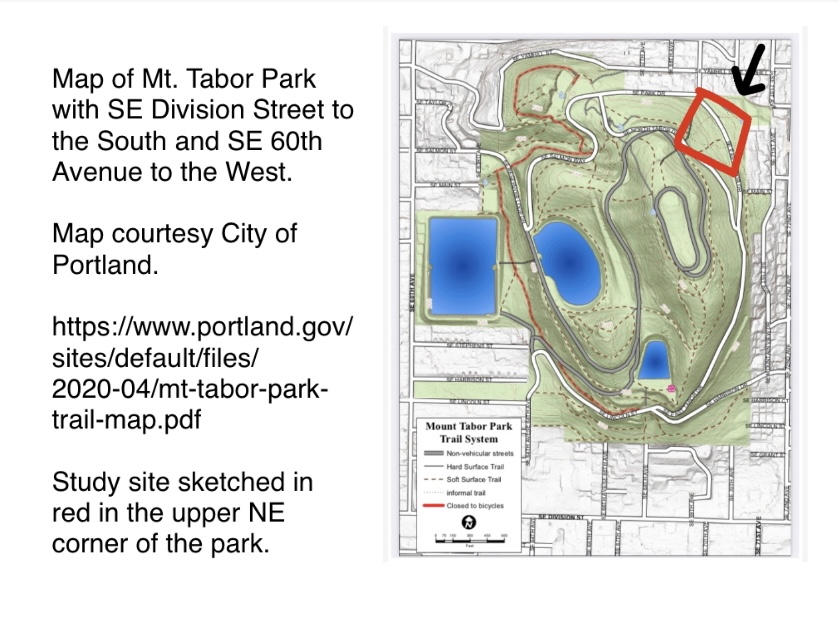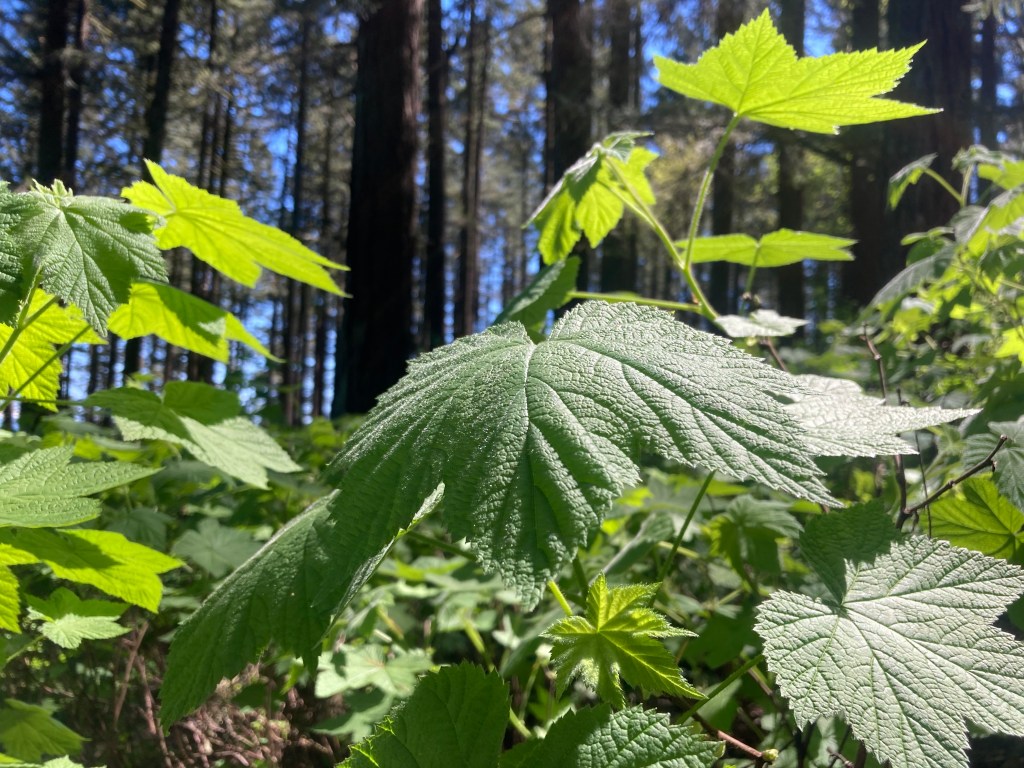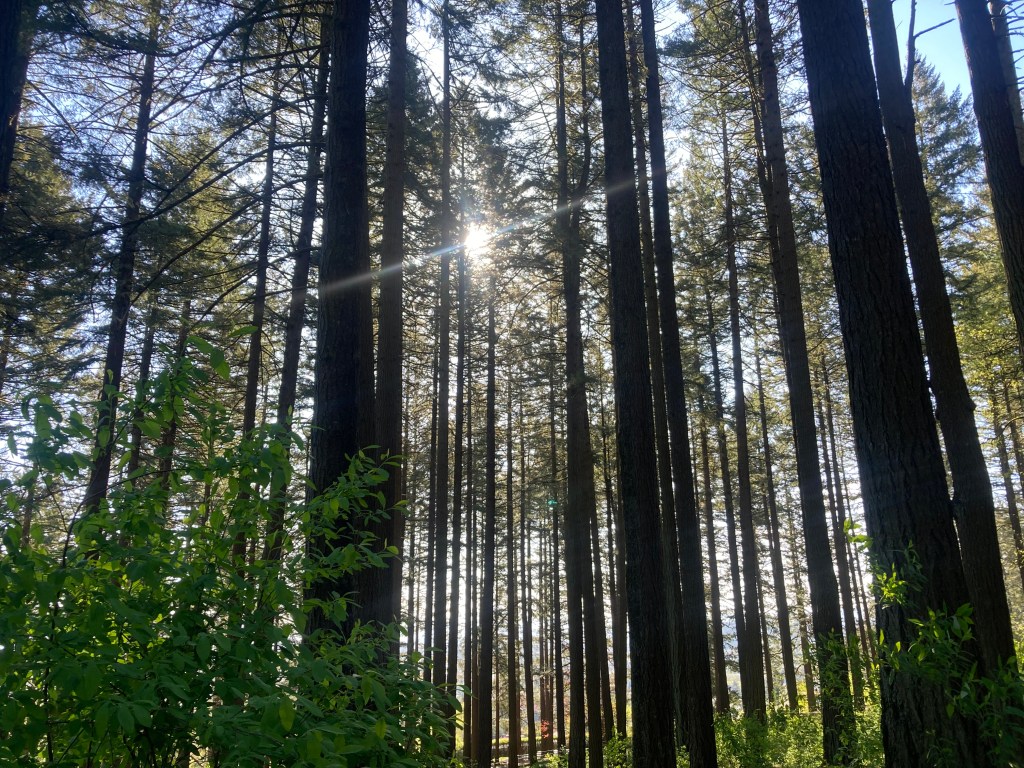Egad! I realize suddenly: it has been three months since last I cast a cursed composition into this blasted blogosphere! This despite writing more in the past half a year than probably ever before in my life. While I’ve been away, my attention has been devoted almost exclusively to classwork, and I am becoming somewhat adept at cranking out pages of data each week.
I am finding most of this research stimulating and so, while a few more esoterically- oriented pieces remain unfinished, I thought I may as well present some of my scholarly output on this platform too. After all, the ultimate goal is for a more holistically-oriented and actualized life! So lest you think I’d forgotten you, reader, let me present this short assigned essay I wrote for my Field Methods In Human Geography class, in which I explore local parkland through three different data-gathering techniques.
I hope you enjoy this other type of inquiry in which I am engaged, parallel to my occult and artistic praxis!
Jason Triefenbach, HFHR, SMG

Field / Participant Observation at Mt. Tabor Park
For this exercise I chose a shady slope of Mt. Tabor Park in SE Portland, a site I visit fairly often and that is part of my ongoing research project on parkland soils and community resilience. The location is home to a large grove of predominantly Douglas Fir trees, and made the news recently during the mid- January ice storms in Portland that caused numerous trees to topple both in the park and throughout much of the city.
Site: Mt Tabor Park, NE face of the mountain near the SE Yamhill and Park Streets entrance.

In addition to the Doug Fir grove, this area is amended with built features: tennis courts, a small building of unknown usage, intersecting roads and trails, and a staircase leading upwards in elevation toward further amenities and open spaces at the peak. This area, like most of the park, is popular for exercise and walking dogs.
I visited the park three separate times on the same day: Thursday April 18 at 8:30 am, 1 pm, and 7 pm. I wanted to get a long exposure snapshot of the park site on one particular day, so I chose to spread the visits out as equally as I could between morning and nightfall. During each visit I navigated a roughly diamond shaped group of short trails, walking slowly as I observed and made note of my direct impressions of sight, sound, ambient conditions (temperature, time of day, light level and quality), number of other people around me and how they were using the site, as well as geophysical data like ground cover varieties, the state of recovery from storm damage, and other information that felt intuitively relevant as I encountered it.
During the three visits to the site, the park was being used very sparingly: not a lot people in the morning (a few walking dogs, and toward the end of my visit a small number of cars were arriving up the slope from Yamhill), then a slight increase in foot traffic during my afternoon visit, and hardly anyone in the evening. The stairway is popular for exercise – hikers begin their climb around the slope here, and there are sometimes people in workout clothes who jog up and down repeatedly. On all three visits this is where I encountered the most people. I noticed the most vehicular traffic on my third and final visit, with cars coming and going along two roads which meet near the start of my route.
I noted views of Mt. Hood to the East and Mt. St. Helens to the North on the horizon. Also present and contributing to the general ambiance: sounds of birds, traffic from SE 82nd and Hwy 205, a train whistle in the distance, and two women chatting as they descended one trail with visors and walking sticks. As on previous visits in February and March of this year, I once again noted winter storm damage to sections of a park road and sidewalk: sections of a guardrail which had lay mangled and twisted on my visit just after the heavy ice had melted in early February. The pipes and rebar now lay piled to one side, rubble removed, yellow CAUTION tape still fluttering in the breeze. Fallen trees had been sawed and pulled away from the road and trail, but otherwise left where they’d fallen. I wondered whether they would be left to decompose naturally, or if further cutting and removal would occur during the warmer months.

By afternoon, the light had changed dramatically. The contrast in brightness between the park terrain and the neighborhoods beyond was stunning: streets and houses to the East and North bathed in golden sunlight from a cloudless sky while the high canopy of the fir trees kept the park floor in deep green shade. This was mostly natural ground cover: maples, sparse wildflowers, and native foliage similar to other regional forests along the Columbia Gorge and around Mt. Hood. I noticed the usual profusion of Snowberries, and familiar shrubs and grasses. One red flower that I encountered did not seem native to me – I wondered if it had been planted by a human visitor, or growing from a seed deposited by a bird or a squirrel? I photographed several of the plants to identify by name later.
On my evening visit I took no notes. The sun had set on this side of the mountain, and in the cold evening shadows my imaginative faculties came to the forefront. The wind had picked up, and the trees, each hundreds of feet high, swayed and groaned. A beat up car raced up the road below me, and a jogger hurried down the stairs at an angle fifty yards up the slope ahead. I walked slowly through the woods, listening for animals and people, and relishing a nervous thrill as the daytime familiarity of the park gave way to an enjoyable atmosphere I allowed myself to indulge as “folk-horror”.
During each of the three visits I noticed myself being noticed by others. On my first two sessions I was using the voice memo app on my phone to record my observations. In the morning I was talking into the phone pretty constantly throughout the walk, and one woman with her dog seemed to watch me for a while after we crossed paths, but did not follow. And then further up the hill near the stairs, the people I passed noticed my activity as well. In the afternoon I paused for three very short recordings, and was noticed by passersby on two of those occasions. During my last visit I was not recording, and so I don’t believe I would have stood out in that regard to the two or three people I passed.

Looking forward to further research questions, I would like to repeat the fieldwork several more times, as well as visiting the other sites in my broader research project to conduct similar data gathering. I did in fact repeat a site visit to Powell Butte that day as well, mid-morning on 4/18 and recorded it in similar fashion. In the long run I would like to compile geophysical, sensory, and social – emotional data on Mt. Tabor as well as seven other park sites in Portland that I selected in February. Now I ask myself, would it be more beneficial to focus on just one park for a set period of time, before moving on to the next on my list, or should I do my best to visit all of the sites equally, for a more integrated view of the various pieces of the puzzle all at once, as my thinking develops?
The opportunity to sample and compare the three methods of data collection has been helpful to my ongoing parkland concerns. I began the day with the first method – near- constant notes spoken into the recorder as I walked. In this way I was able to record real-time impressions as I walked, describing the landscape features and layout of the road and trails in my chosen area. I was able to switch pretty seamlessly from commenting on human activity, to plant distribution and behaviors, to views outside the park, and subjective impressions I had of the atmosphere and how it made me feel. On my return at 1 pm, I made three very short recordings describing basic impressions and comparing the conditions to my earlier visit. And on the final site visit just after sundown, I didn’t attempt to remember any particular data about the physical surroundings; instead, I payed attention to my emotional state as I interacted with the grove and “let my imagination run wild” just a bit.
I can see the benefit of using all the methods in tandem. As I continue to visit the parks I’m looking at, it will be helpful to begin by collecting detailed, on-site sensory impressions and other subjective information, and to flesh out a physical description of the sites as they change over time both seasonally and through human intervention in the landscape. As the visits potentially continue, my notes can become a bit more terse and clinical, limited to updates about temperature, floral taxonomy, usage and demographic data about park visitors, etc. And visiting these sites without the mental filter of the notetaking process can allow for a more subjective and colorful storytelling to emerge from the experiences. This in turn adds flesh to the bones of taxonomy, demographics, and geological data, inviting participation in those subjects by a wider population of non-scholar stakeholders. ⚫️

Leave a comment